Introduction

Cosina is always up for a surprise and when they announced this Voigtländer 55mm 1.2 SL IIs Nokton for the Nikon F-mount in 2023 – 5 years after Nikon transitioned to the Z-mount – that surely was a big surprise. Lenses as fast as f/1.2 are rare birds in the F-mount world because they are really operating at the limit of this bayonet. As I will show you in this review, Cosina’s engineers managed to create something that Nikon’s engineers were not able to achieve in over 60 years.
Sample Images






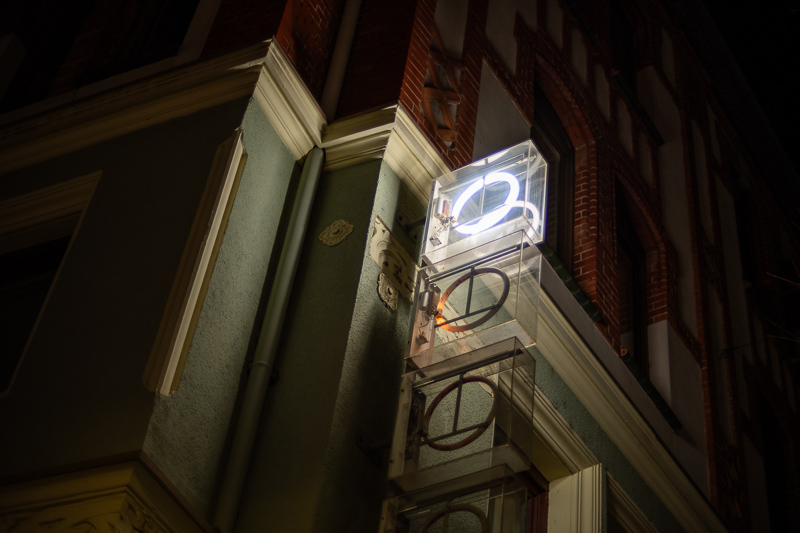

Most of the sample images in this review can be found in full resolution here.
Contents
Specifications / Version History
Nikon produced three different f/1.2 lenses for the F-mount:
- Nikon 55mm 1.2
pre-Ai/Ai, 7/5 design, 7 aperture blades, 410g, 1965-1978, ~176.000 made - Nikon 50mm 1.2
Ai/Ai-s, 7/6 design, 7 or 9 aperture blades, 354g, 1978-2020, ~240.000 made - Nikon 58mm 1.2 Noct
Ai/Ai-s, 7/6 design, aspherical element, 7 or 9 aperture blades, 470g, 1978-1998, ~11.000 made
In 2007 Cosina released their SLR 58mm 1.4 for the first time. In the meantime that lens had been released with several different casing designs and it is still in production. The latest versions also feature electronic contacts. In 2023 Cosina added this faster 55mm 1.2 SL IIs Nokton to the lineup, it has the following specifications:
- Diameter: 69 mm
- Length: 48 mm
- Weight: 361g (measured)
- Field of view: 43° (diagonally)
- Filter Diameter: 52 mm
- Number of Aperture Blades: 9 (rounded)
- Elements/Groups: 7/6

- Close Focusing Distance: 0.45 m
- Maximum Magnification: 1:6.5 (measured)
- Mount: Nikon F
Unlike Cosina’s other current F-mount lenses this is only available in black.
buy from Amazon.com | B&H | ebay.com | ebay.de (affiliate links) for $699/649€ or find your local Voigtländer distributor
Disclosure
The Voigtlander 55mm 1.2 SL IIs Nokton was provided by Voigtländer GmbH, the German Voigtländer distributor, for reviewing purpose for a duration of 4 weeks.
Handling / Build Quality

The design of the Voigtländer SL lenses has undergone several changes over the years. In 2017 Cosina updated the design of the whole line up and their design closely resembles that of old Nikon lenses now. They have a sprocket on the aperture ring, colorful markings and all but this 55mm 1.2 also feature a silver ring with DoF markings.
The casing feels like it is an all metal design, all the writings are engraved and filled with paint.
The focus ring has a nice and even but slightly soft resistance. It has a long focus throw as it takes 270° from the minimum focus distance of 0.45 m to infinity and it turns “the Nikon way”.
The aperture ring is pretty much the same as on Nikon’s lenses as well: equidistantly spaced full-stop click stops and located close to the camera body. Here the aperture ring can not be moved past the f/1.2 mark, something that bothered me about the Nikon 55mm 1.2 Ai.

Looking at the bayonet you will notice that unlike Nikon’s f/1.2 lenses this one features a perfectly round rear element. To accomodate the aperture lever the bayonet has a cut out here and Cosina also miniaturized the part with the electronic contacts. This is the most impressive mechanical design of all the f/1.2 lenses for the F-mount. The electronic contacts will transfer exif data to Nikon DSLRs and also to mirrorless cameras when using an adapter that has electronic contacts.
Cosina sells a screw-in hood for this lens which is called LH-55s. I did not receive it with this review sample so there is not a lot I can tell you about it.

The Voigtländer 55mm 1.2 SL IIs Nokton is very similar in size to the Nikon 55mm 1.2 Ai, but its focus ring is a bit slimmer. Like most of the old Nikon manual focus lenses all the Voigtländer SL IIs lenses also feature the typical 52 mm filter thread size.
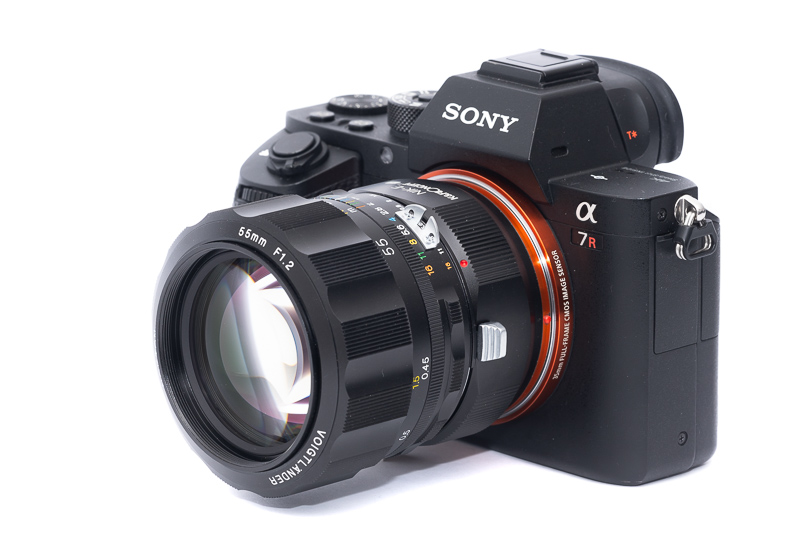
Vignetting
Light falloff

| f/1.2 | 2.8 EV |
| f/1.4 | 2.5 EV |
| f/2.0 | 1.6 EV |
| f/2.8 | 1.0 EV |
| f/4.0 | 0.6 EV |
| f/5.6 | 0.3 EV |
| f/8.0 - f/16 | 0.2 EV |
The vignetting figures are slightly higher than those of the Nikon 55mm 1.2, but the difference is never more than 0.2 EV which is completely negligible.
Generally the vignetting amount is typical for a lens with these parameters. They are more or less the same as those of the Samyang 50mm 1.2 XP and Meike 50mm 1.2 whereas the Canon EF 50mm 1.2L USM showed slightly higher vignetting at f/1.2.
It is recommended to have a look at this article first to get an idea how this brightness graph works.
Optical vignetting
Fast lenses usually show a noticeable amount of optical vignetting, especially so the compact ones. Without going too much into technical details optical vignetting leads to the truncation of light circles towards the borders of the frame.
In the center of the frame almost every lens will render a perfect circle, but only lenses with very low optical vignetting will keep this shape in the corners.
So in the following comparison we move from the center (left) to the extreme corner (right) and see how the shape of the light circle changes.
I was very curious about the Voigtländer’s performance in this category. Designing an f/1.2 lens for the F-mount is no joke. Nikon attempted doing that three times and every time the rear element wasn’t perfectly round to make space for the aperture lever.
Cosina’s engineers managed to design an f/1.2 lens without that flaw – something Nikon’s engineers did not manage to accomplish in over 60 years. And they even managed to include electronic contacts. This sounded too good to be true, so I was wondering if the opening might be slightly smaller than that of the Nikon 55mm 1.2, but as you can see from the comparison above, that is not the case. This Voigtländer 55mm 1.2 SL IIs is the first real f/1.2 lens for the F-mount.
The optical vignetting is still very high and both lenses show a comparable amount. This Voigtländer does create slightly more natural shapes though.
Nikon’s 50-58mm f/1.2 lenses either use 7 or 9 straight blades. I am quite happy Cosina decided to go with 9 rounded blades, leading to way more pleasing out of focus highlights when the lens is slightly stopped down.
Featuring an all-spherical design we do not encounter any onion ring structures here.
Sharpness
Glow / Spherical Aberration
Many modern fast lenses offer astonishingly high image quality at their maximum aperture. For fast lenses from earlier times this is usually not the case though. Especially at the maximum aperture these lenses often create a bit of a “glow“. If we were looking for a more technical term for “glow” it would be undercorrected spherical aberration.
Spherical aberration is the only classic lens aberration that has an effect on the center of the frame. It will make your image appear softer and add some additional “glow” to already bright parts of the image. It is also an effect similar to what you get when using a diffusion/mist filter. Some people may like this softer rendering for portraiture, but then many others simply see this as bad image quality.
This Vogitländer 55mm 1.2 SL IIs Nokton – despite having been released in 2023 – features a classic double gauss design without any aspherical or APD elements. Its design is actually very close to that of the Nikon 55mm 1.2 from 1965. In my tests the Nikon 55mm 1.2 shows strong glow at f/1.2 to f/1.4, so I was very curious how this “modern” Voigtländer performs.
You can find a few image sets shot at f/1.2 and f/2.0 (where most of the glow/spherical aberration is gone) here, so you can better judge this “effect” for yourself.
This Voigtländer 55mm 1.2 is also a bit softer at f/1.2 and we definitely see some glow here as well – especially at longer focus distances. The effect is not as pronounced as with the old Nikon 55mm 1.2 though.
Focus shift
33% crops, Sony A7rII
As is very typical for lenses like this there is a lot of undercorrected spherical aberration at closer focus distances which makes finding the plane of optimal focus a bit difficult. There is clearly some focus shift between f/2.0 and f/2.8 or f/4.0, so this is something I would watch out for when using this lens on a (D)SLR.
On a mirrorless camera with working aperture this will not be a problem as long as you stop down first and then focus.
Performance here is very similar to the Nikon 55mm 1.2, but I do have the impression the Voigtländer still has slight issues with it at longer focus distances, which wasn’t the case for the Nikon.
Infinity (42mp Sony A7rII)

The Voigtländer 55mm 1.2 SL IIs uses an all spherical design very similar to the Nikon 55mm 1.2 from 1965. The Voigtländer 50mm 1.2 Nokton and 50mm 1.0 Nokton are very different, as they both make use of 2 aspherical elements, vastly increasing the performance at wider apertures compared to an all spherical design.
At f/1.2 to f/1.4 the lens is soft everywhere, but surprisingly astigmatism seems to be decently corrected as we can make out small details over most of the frame.
Stopping down to f/2.0 increases the contrast significantly but the midframe area already looks decent. The corners are still nothing to write home about.
From f/2.8 the center shows really good image quality and from f/4.0 the midframe as well. For the corners to look good however, stopping down to f/11 is not a bad idea.
The performance is very similar to the Nikon 55mm 1.2. I do think the Voigtländer is a bit contrastier stopped down, but this might also be because it is a new lens from factory, whereas my sample of the Nikon lens was already 47 years old.
Portrait 1.5 m (42mp Sony A7rII)
For portraiture it isn’t so important how flat the field is, it is more interesting to see what the sharpness is like when focused at different parts of the frame to take field curvature out of the equation.

We will be looking at 100% crops from the 42mp Sony A7rII.
f/1.2 <—> f/2.0
This is roughly the focus distance I would expect a very fast unit focus lens like this to be optimized for.
If we compare this Voigtländer lens to the Nikon 55mm 1.2 Ai here we see something very interesting: their performance is actually very similar. At f/1.2 the Voigtländer does look a bit clearer (especially in the outer midframe area), but I cannot call it a huge difference. By f/2.0 I don’t think I would be able to tell them apart.
Close 0.45 m, 1:6.5 (42mp Sony A7rII)
Also here I can directly compare the Voigtländer and the older Nikon 55mm 1.2 Ai and also here they perform similar.
At f/1.2 and f/1.4 the old Nikon lens actually looks better to me, by f/2.0 they perform the same. The Voigtländer does focus slightly closer though.
Flare resistance

Now this is a category where fast old lenses usually struggle a lot. But this is also the category where the fast modern Voigtländer lenses usually perform very well.
At the maximum aperture there are some positions with the sun (or another strong light source) outside the frame that lead to a bunch of huge artefacts. Shading the lens helps to get rid of it, which means the lens hood might have also helped here.
Stopping down to f/2.0 is another way to get rid of these artefacts, as can be seen from the comparison above.
Stopped down to f/11 there are two artefacts I managed to create in these staged scenes and both only appear with a strong light source outside the frame. I never encountered these in the field.
I don’t think the performance is as good as that of the Voigtländer 50mm 1.2 Nokton for mirrorless cameras, but still good under most circumstances, way better than that of the old Nikon 55mm 1.2.
Coma
100% crops from extreme corner, focused on center, Sony A7rII
Unlike the Voigtländer 50mm 1.2 Nokton and 50mm 1.0 Nokton Cosina decided to make this 55mm 1.2 an all-spherical design. What does this mean for the Coma correction? Nothing good. If we compare the Nokton and the Nikon 55mm 1.2 the Coma patterns are actually eerily similar. If it wasn’t for the different sunstar rendering I would be tempted to call the performance identical.
Long story short: also here we see massive coma artefacts at f/1.2 to f/1.4. For mostly clean corners stopping down to at least f/4.0 is a good idea.
Distortion
Distortion is low and uniform. There is no profile in Lightroom available, but dialing in +4 in Lightroom/Photoshop is doing a very good job at correcting it. Another category where the new Voigtländer lens performs exactly like the Nikon 55mm 1.2.
Bokeh

Long story short: very similar to the Nikon 55mm 1.2, but better. I am sure this statement is not sufficient for you, so as ususal, let’s have a closer look.


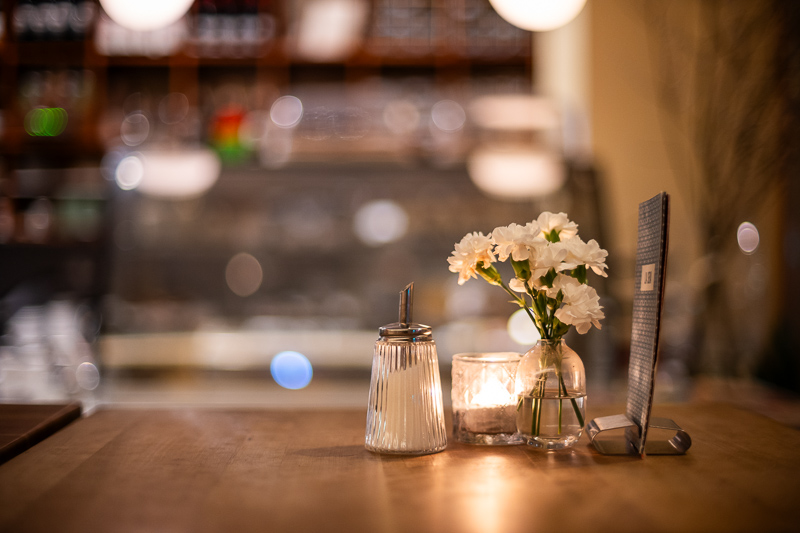

At close distances with the lens set to f/1.2 there obivously is a high amount of blur. With not so busy backgrounds it can be really nice and smooth, but with more complex backgrounds things easily get busy.

There is a big difference in terms of rendering between f/1.2 and f/2.0 here. In some scenes I preferred the stronger blur and at times even the slight glow at f/1.2, in others I preferred the higher contrast and the calmer rendering at f/2.0.

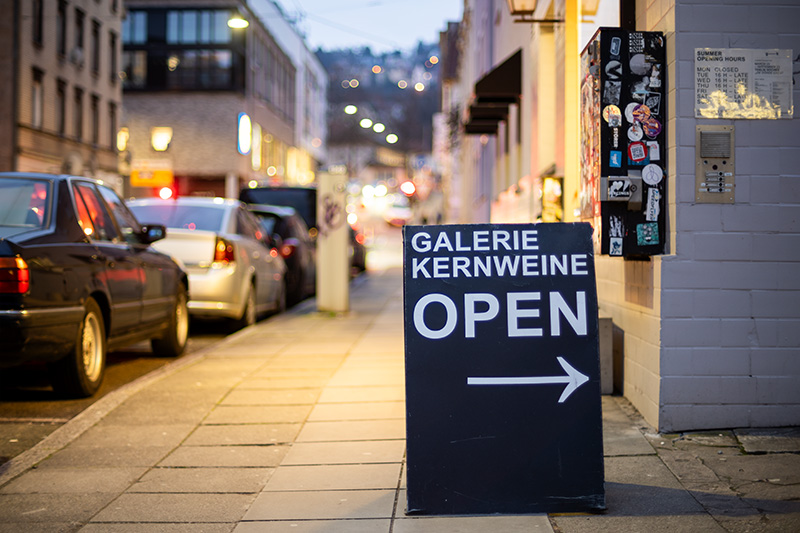

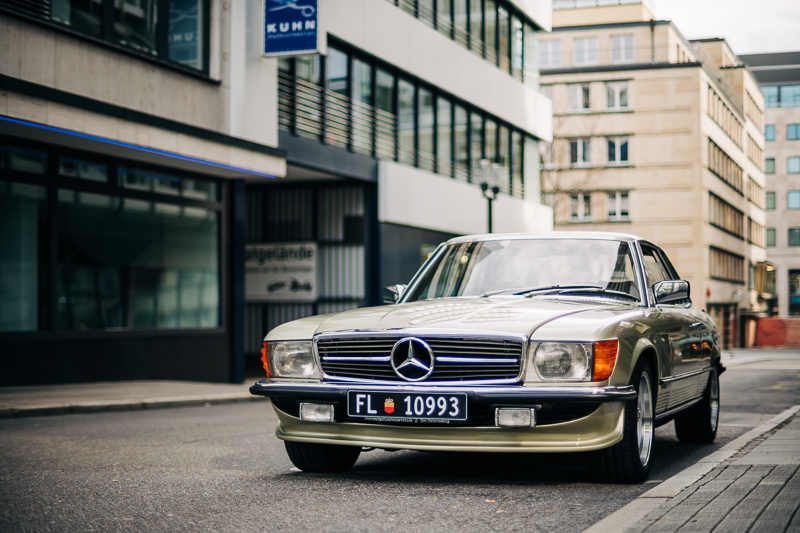
At longer focus distances this Voigtländer is also a bit softer at f/1.2, but it is not that obvious compared to the Nikon 55mm 1.2, where the difference between f/1.2 and f/2.0 was actually bigger.
This Voigtländer 55mm 1.2 SL IIs Nokton sits inbetween true vintage lenses like the Nikon 55mm 1.2 and compact modern f/1.2 lenses like the Voigtländer 50mm 1.2 Nokton. On the one hand it is not as soft at f/1.2 as the original Nikon lens from 1965 while still inheriting a lot of its character. On the other hand it is not as contrasty as modern lenses that use one or more aspherical elements.
In this way it reminds me a bit of the better MS-Optics lenses, that also make use of some modern technology (e.g. high quality coatings) but not of others (aspherical elements, high element counts). I think for some people this Voigtländer 55mm 1.2 SL IIs may strike a very appealing balance here.
Sunstars
For most of their lenses Cosina is using either 10 or 12 straight aperture blades leading to distinct sunstars – even when the lens is only slightly stopped down.
For all their current SL lenses for F-mount they decided to go for 9 rounded aperture blades though. As I have already shown you before this is good news for the bokeh when the lens is slightly stopped down, but it also leads to less distinct suntars. From f/8.0 to f/16 they still look quite alright to me though thanks to a mostly even length of the rays.
The purple halos at f/1.2 and f/1.4 also tell me there is strong undercorrected spherical aberration here.
If you want to know more about the sunstar rendering of different lenses have a look at this article.
Chromatic aberration
Lateral
100% crops from corner, Sony A7rII
Lateral CA are on a very low level. I would have never noticed them had I not specifically looked for them. Very easy to correct in post with just one click, e.g. in Lightroom, if you feel the need to do that.
Longitudinal
Simple double gauss design, no special elements, f/1.2 maximum aperture. You already know where this is going, right? Longitudinal CA are at a high level. At f/1.2 to f/1.4 this Voigtländer actually looks worse than the Nikon 55mm 1.2 – I guess this is because the Nikon is softer at these apertures and this helps masking the loCA a bit.
When it comes to purple fringing the situation is a bit better. Here stopping down to f/2.0 is sufficient to mostly get rid of it.
Conclusion
good
|
average
|
not good
|
A brand new F-mount lens being released in mid 2023. Who would have thought of that? Not me, that’s for sure.
This Voigtländer 55mm 1.2 Nokton SL IIs reminds me a lot of the Zeiss ZM 50mm 1.5 C-Sonnar. Both these lenses feature an optical design based on a very old lens with distinct rendering and in both cases the manufacturers decided to only carefully update that design. This means if you are looking for a modern high performance lens that makes use of aspherical elements and a complex floating elements design (like e.g. the Voigtländer VM 50mm 1.0 Nokton or the Sony FE 50mm 1.2 GM) you may be disappointed here.
Don’t get me wrong though: compared to the Nikon 55mm 1.2 from 1965 – that this Voigtländer seems to be heavily based on – the sum of these updates is still very meaningful: much better flare resistance, shorter minimum focus distance, lower weight, nicely rounded aperture blades, perfectly round rear element without cut-out and slightly higher contrast at f/1.2.
The price also looks fair to me, as this lens is much cheaper than e.g. the Voigtländer 50mm 1.2 with its aspherical elements and not much more expensive than an original Nikon 55mm 1.2 Ai in a comparable condition.
After having already used three of the four f/1.2 standard lenses for Nikon F-mount (and the fourth one being the collector’s $3000 58mm 1.2 Noct) this Voigtländer 55mm 1.2 SL IIs Nokton is definitely the one I would prefer for actually using on my Nikon FM2n.
buy from Amazon.com | B&H | ebay.com | ebay.de (affiliate links) for $699/649€ or find your local Voigtländer distributor
Alternatives
I reviewed a lot of fast 50mm lenses but most of them have been M-mount lenses. I also did a Comparison of Super Fast 50mm M-mount Lenses that might be worth a look.
We also have a Guide on 50mm Lenses that can be used on E-mount cameras (most of them also on other mirrorless cameras) that will give you a good overview.
A few alternatives might be worth talking about in more detail though:
Nikon 55mm 1.2:
I was really surprised by how similar the results from these two lenses look at f/1.2. The Voigtländer really feels like a modern interpretation of the original Nikon 55mm 1.2 though and if money was not object I would gladly prefer it for being a bit less soft at f/1.2, featuring 9 rounded aperture blades, more nicely shaped out of focus highlights, lower weight, perfectly round rear element and better flare resistance. These days it also isn’t super easy to find one of these Nikon lenses in really good condition, especially when it comes to the late Ai version. The Nikon is still cheaper and it is the true vintage lens with straight aperture blades, more lens flares and even more glow at f/1.2.
buy from ebay.com | ebay.de (affiliate links) starting at $300
Nikon 50mm 1.2 Ai(-s):
I only used this lens shortly. From my memories, compared to the aforementioned Nikon 55mm 1.2, it performs similar at f/1.2 to f/1.4 but better at infinity slightly stopped down. The Ai-s version of this 50mm also features 9 aperture blades, but they are not really rounded. Usually in very good condition this lens is more expensive than the Nikon 55mm 1.2 and in some parts of the world its used price is actually close to that of a new Voigtländer 55mm 1.2 SL IIs, which I think makes it not exactly great value.
buy from ebay.com | ebay.de (affiliate links) starting at $400
Nikon 58mm 1.2 Noct Ai(-s):
Thanks to its hand ground aspherical element this 58mm corrects coma much better than the two aforementioned other Nikon f/1.2 lenses and also than this Voigtländer 55mm 1.2 SL IIs. But this is all where it shines. Collectors have driven up the price of this one to completely absurd levels. You don’t pay for its great performance, only for its rarity. And it isn’t even that rare.
I still hope I get the chance to one day review one of these to demystify it.
buy from ebay.com | ebay.de (affiliate links) starting at $3000
Voigtländer 58mm 1.4 SL IIs Nokton:
Cosina has been making this lens for quite some time with different casings designs. It does perform a bit better at its maximum aperture and is slighty smaller and more affordable. If you are looking for a nicely made lens at this focal length and you don’t need the f/1.2 bragging rights this is a very sensible choice.
buy from Amazon.de | B&H | ebay.com | ebay.de (affiliate links) for $549/579€ or find your local Voigtländer distributor
Sample Images













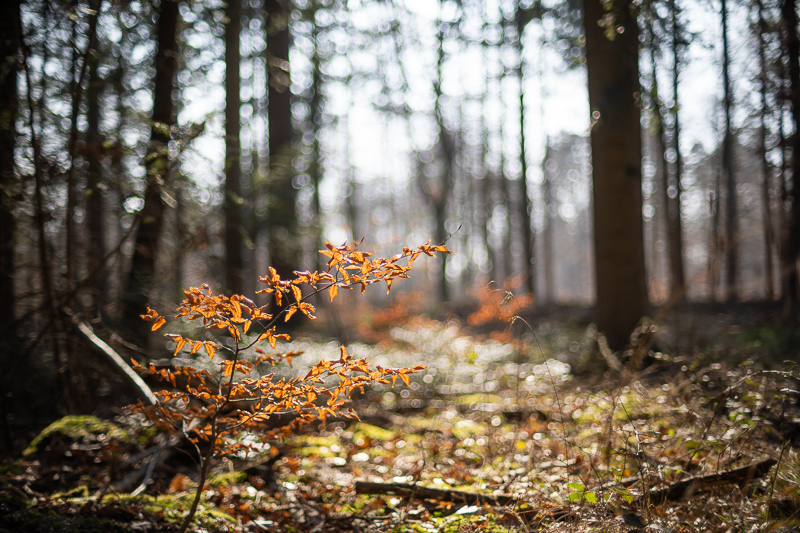


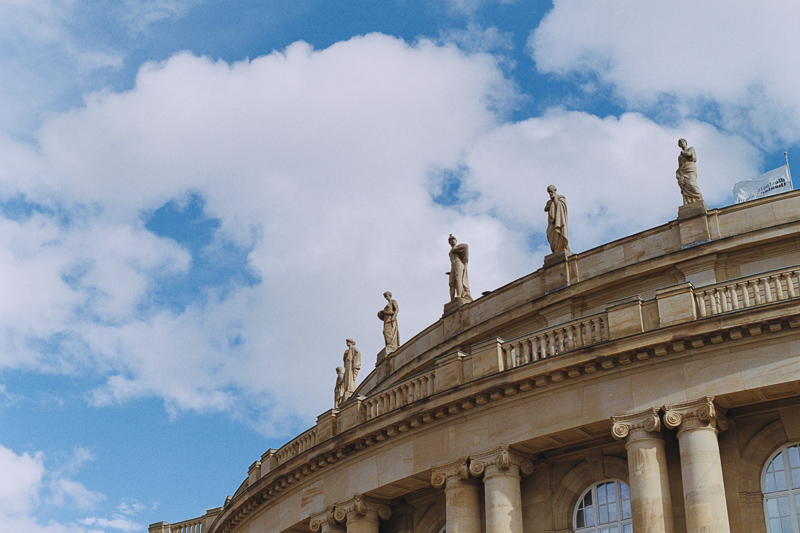



Most of the sample images in this review can be found in full resolution here.
Further Reading
- All Lens Reviews
- All Voigtländer Reviews
- Analogue Adventures Landing Page
- Review: Sigma 50mm 1.4 EX
- Lens Aberrations explained
- Review: Leica 90mm 2.0 Summicron
Support Us
Did you find this article useful or just liked reading it? Treat us to a coffee!
This site contains affiliate links. If you make a purchase using any of the links marked as affiliate links, I may receive a small commission at no additional cost to you. This helps support the creation of future content.
Latest posts by BastianK (see all)
- Site Update: Gallery - May 13, 2025
- Review: Canon TS-E 135mm 4.0L Macro - May 7, 2025
- Review: Fujifilm X100VI – The Hype Camera - May 3, 2025











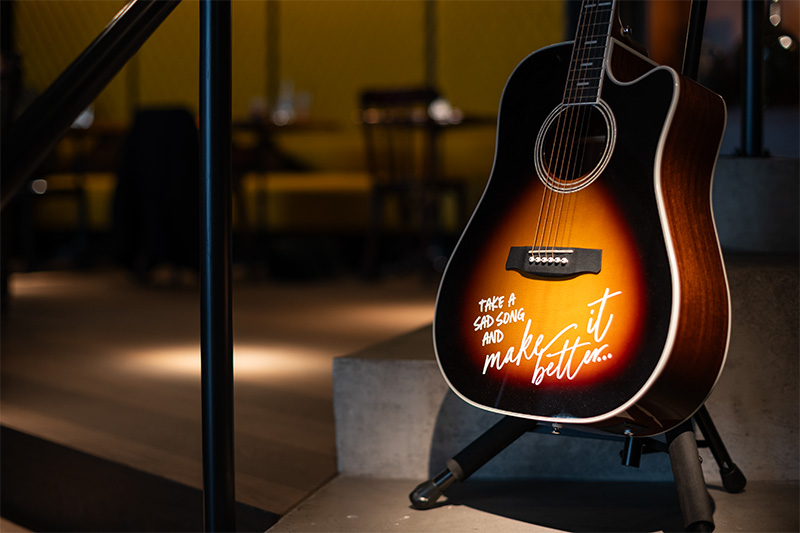














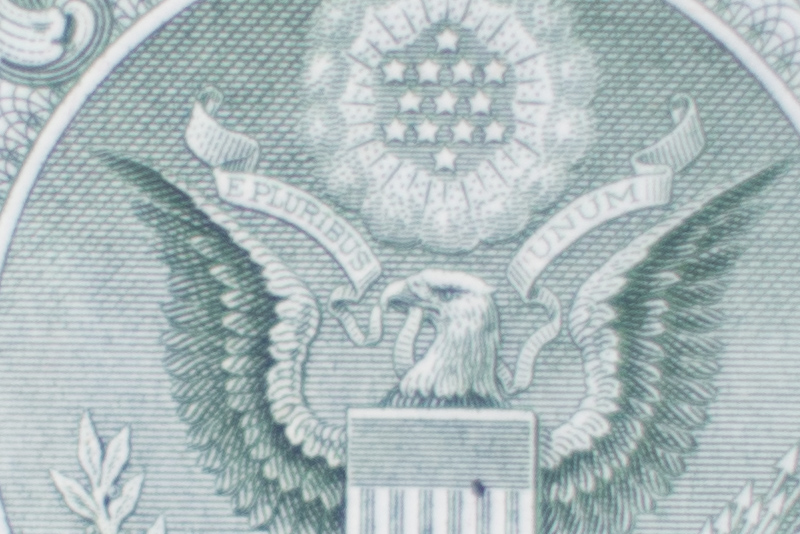

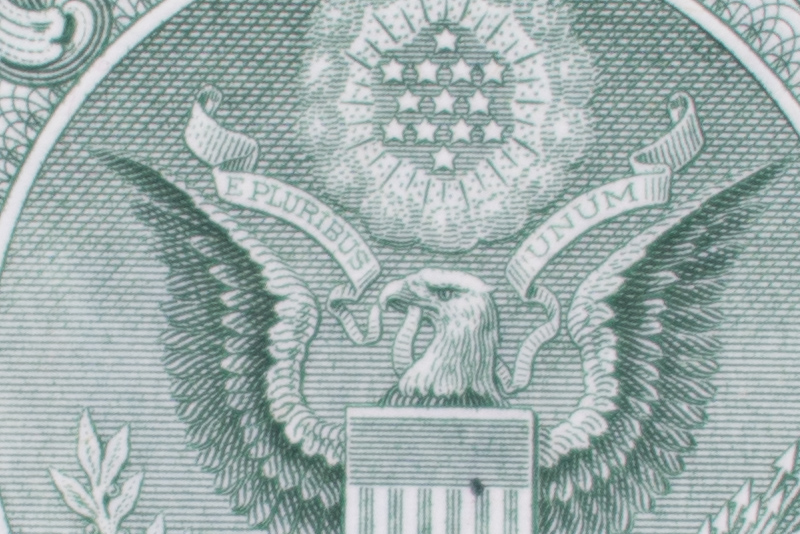


























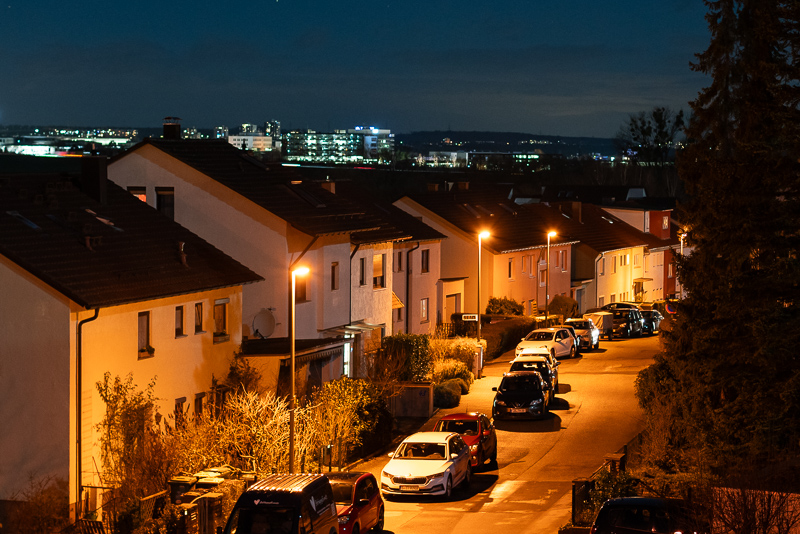














Wow that’s off to the engineers at cosina for this one. Its well priced and I do think it strikes a good balance, while under harsh testing it’s possible to find flaws, it’s never bad enough to ruin a picture.
Such a stunning product as well, it really is a gem from the Cosina designers!
I am curious to find out if it was their farewell to the F-mount, if so, they could have not picked a better lens for it!
I have the last version of the Voightlander 58mm f/1.4, with the classic color coded DOF marks and it is terrific. When I saw this faster lens, I mentally computed that the 58mm has a few more millimeters and is only a fraction of a stop slower, so it remains. As a 50 year Nikon shooter, the 58mm f/1.4 Voightlander is better than any manual focus standard Nikkor that I’ve ever used.
A review of the 58mm 1.4 is on the horizon as well 🙂
Despite its limitations, the CV 58/1.4 is a phenomenal lens for me. I usually use it at f2 in which case it works very very well with the LM-EA9! The things that are most striking about that lens for me are the colors, tones, and absolute beautiful rendition. Unlike anything I’ve had. It also works very nicely at 1.4 at closer distances and for headshots. If I want 1.2 and bokeh I go for my 40/1.2
Isn’t the CV 58/1,4 a direct descendant of a famous RE. Auto-Topcor 1,4/5.8cm? I believe so. And this was a great piece of glass made by a somewhat forgotten Topcon brand.
it could be considered a ‘tribute’ to that lens, as was the Cosina-made Auto-Topcor 58mm f1.4, but the lens composition and other characteristics were completely different from the original.
Fabulous!
I have to say that I really like the close distance bokeh here. A bit of character is nice to have when focusing close (in ideal world the amount of said “character” wouldn’t increase with the focusing distance). It seems they’ve struck a nice balance between vintage characteristics and tiny modern improvements.
I don’t mind the glow either, it’s doesn’t look too bad and I guess it can be called a feature rather than a “bug”.
The price is a positive surprise too. I don’t know how much sense it makes to buy it for Sony (losing EXIF with the usual adapters, and there are native options), but I like the option to use a helicoid adapter this opens. That’s actually pretty important to me with “artistic” lenses like this. Another thing I like with small filter diameter is that I can attach any of my achromatic close up lenses if needed. Small things can make such a difference to some of us…
That’s a great lens in its own way! But its usefulness for mirrorless user leaves somewhat to be desired IMHO. After all, it’s not that cheap, compared to old Nikkor lenses. To me personally it’s worth either stepping up to modern CV 50/1.2, or down to 50-years old variant in great condition at about half the price.
Thanks for the review – been looking forward to it ever since previewing your sample images.
I’d like to see more samples slightly stopped down at f1.4 and f/2. It seems like this lens would benefit from a stop inbetween around f1.7, to strike a balance between glow/character and sharpness/smoother bokeh.
Very much looking forward to your 58/1.4 review! It’s competing with this 55/1.2 to fill my spot for a fast low-element-count (good microcontrast) lens with decent performance and bokeh. From the samples I’ve seen the 58/1.4 has higher resolution (great microcontrast) but lower color saturation, and more bokeh outlining especially when wide open. Tradeoffs! A direct head-to-head especially stopped down a little to f/2 to calm down their bokeh would be very interesting.
Very timely, quite interesting. This fills a recent, unexpected need … was able to find it used at cameraquest (US voigtlander distributor), definitely looking forward to hands-on next week+.
Thanks for covering an unexpected, unconventional release.
Thank you for reviewing this lens. I’m a bit surprised by your sharpness test since mine is very sharp across most of the frame from f/2,8, except for the extreme corners which stay soft. But my camera is only 24mpix.
Overall it’s not perfect but better than expected and has less fringing than the Voigtlander 58mm. Bokeh is a bit funky wide open but nice. That’s great Voigtlander is still making unusual lenses for older mounts. The SL serie is lovely.
So its better thsn the old Nokton 1.1 M
Similar to the Ai-s but better, for sure sharper than the 58 SL II.
I’d like to see it against the Mr Ding V2 at this point.
Btw the 50 1.2 will be with me until the end.
I’m very intrigued with these Voigtländer for Nikon F mount lenses, Bastian. I’m aware of the presence of some good CV offerings for the Z mount (I actually own some), but do you think adapting lenses like this 55mm 1.2 or the praised 58mm 1.4 to the Z system would worth a try? Maybe some of the readers of Phillip Reeve have some experience in that regard too.
This 55mm 1.2 (and to some degree also the 58mm 1.4) is a slightly modernized version of a vintage design.
Similar to the Zeiss 50mm 1.5 C-Sonnar or the Voigtländer 50mm 1.5 Heliar Classic for M-mount.
The Voigtländer Z-mount lenses all use aspherical elements, which does give a different look.
It all comes down to if you like the rendering of this 55mm 1.2 lens. If so, I don’t see a native Z-mount lens that produces images that look like that.
I adapted this lens to the E-mount and am very pleased with the slightly vintage image and ease of use. The combination of the glow at f/1.2 and the slight soap bubble effect of the bokeh seems like a great balance. Also, I don’t know if this is intentional or not, but at wide open aperture, (artistic) red ghosting tends to cross the screen frequently. This is a lens to have when modern lenses are not enough and you want to use a unique lens.
After reading your review, I decided to purchase the CV 40mm 1.4 M mount. I appreciate its rendering (wide open glow) and I also appreciate the reputation of the Sonnar as a very gentle portrait lens (if you can deal with the focus shift issue, that apparently was corrected for accurate f1.5 shoots in the last batches). The TTartisan 75mm 1.5 swirly bokeh plays in a similar rendering league and I’m glad this 55mm belongs to the same club. I will most surely give it a try.
PS: As far as I know, the only lenses on the market that combine old school features and some modern style are the digital medium format Mitakons. The 80mm is a jewel.
Btw, Bastian, once you define the 55mm 1.2 as the Sonnar of the F mount, have you had the chance to compare both lenses? I remember your Sonnar review is from 2018, so perhaps only your memory can help us.
No, David reviewed the Zm 50mm 1.5. I haven’t personally used it.
I think it is a bit more contrasty and also more funky at its maximum aperture.